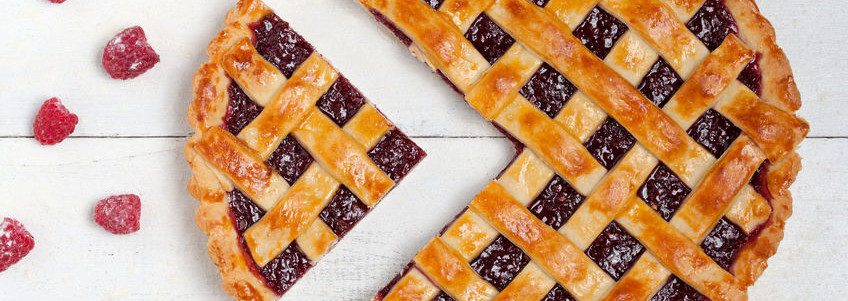
Why bake with rice flour?
Rice flour is neutral when it comes to taste and color. While the addition of transglutaminase or hydrocolloids is important when using it in products that need higher volume or water absorption, rice flour does bring good gelling capabilities to the table. It’s ideal for:
- Thickening
- Stabilizing
- Frozen foods
- Reducing hardness and breakage in chips and snacks
The key in sweet rice is the very low amylose to amylopectin ratio, compared to medium or long grain rice. Sweet rice flour forms a free-flowing gel with a glossy appearance and fatty mouthfeel compared to the more grainy or weak gels produced by long and medium grain rice flours. After it reaches its peak viscosity, it is not very affected by additional heating and cooling. In prepared frozen foods, it acts to prevent syneresis.
Sweet rice flour: more than gluten-free
At PGP International, our conventional Glutinous Short Grain (Sweet) Rice Flour is organic, Kosher, non-GMO and of course, gluten-free. Here are just a few ways to use it in your baked goods and snacks:
- Rice Crackers: Crackers manufactured with Sweet Rice Flour are typically light and crispy in texture and dissolve easily in the mouth.
- Snack Chips: Sweet Rice Flour can reduce the hardness and provide a melt in the mouth texture in chips that is typically achieved with extra fat content. Adding 5-10% to a baked or fried chip product will diminish chip breakage during packaging. Chips that are manufactured with 100% rice flour will absorb 20-30% less oil during frying.
- Baby Foods: Sweet rice flour will improve the texture because of increased solubility. It is also manufacturing friendly. Due to the increased solubility it is more resistant to lumping.
- Baking: Sweet rice flour will improve the shine on glazes and crusts due to the reaction of the amylopectin starch to moisture, temperature and shear. In freeze-thaw bakery applications, it can hold on to moisture, reducing syneresis and improving the desirable soft texture.
- Pancakes and Wheat Flour Waffles: Sweet rice flour used at 10-15% levels will impart a desirable soft texture, improved moistness and griddle release. The soft and crisp qualities are retained after freezing, thawing and reheating in a toaster. These effects are a result of the low amylose starch in the flour.
- Fish and Poultry: Sweet rice flour will improve the whiteness upon injection.
- Puddings, Gravies, Sauces and Soups: Sweet rice flour will improve solids-building, viscosity enhancement, mouthfeel and emulsification. This is due to the improved solubility and amylopectin starch content.
- Traditional Japanese Confectionery Products: Sweet rice flour is used to manufacture traditional Japanese confectionery products such as Diafuku. These confectionery products are typically called Wagashi products
To learn more about our sweet rice and other rice flours, contact us!

